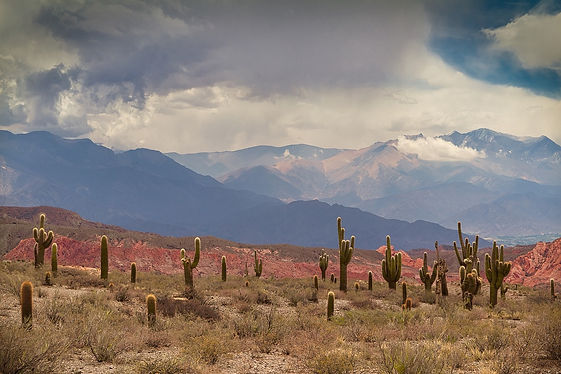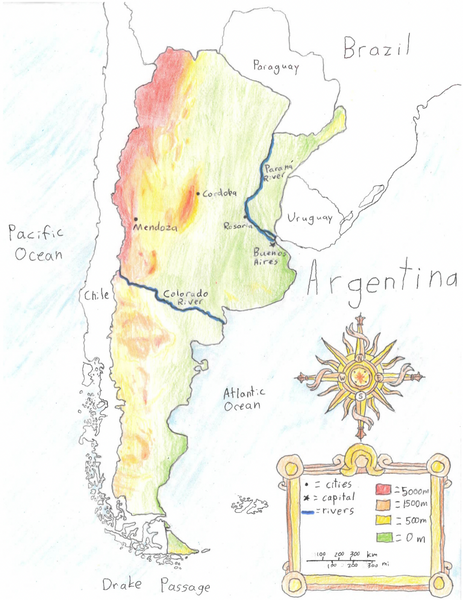
Geography
Geography Overview
The history of Argentina dates back to long before it was settled by Spanish explorers, with diverse groups of Indigenous people all over the country. Before Europeans arrived in Argentina in the early 1500s, there were roughly 300,000 Indigenous people living there. Of these groups, there were many that were extremely advanced in their ways of life. The Diaguita, for example, inhabited the Northwest regions of Argentina. They developed and were known for their complex sedentary agriculture, and lived in large towns. There were also many other large groups of people, such as the Tehuelche, or the Ona, which were the largest groups in their respective area. Many groups also founded cities or lived in regions we still know today. The Querandí people founded and named the city that we know as Buenos Aires, the Capital of Argentina. In the Gran Chaco and Patagonia areas, there were many tribes that were known for their hunting and gathering skills instead of relying on farming. Many of these warriors resisted and fought back against the Spanish, such as the Mapuche, who came from over the Andes to launch an attack against Europeans. The Spanish, with their advanced technology were able to capture many tribes and send them across the country to work as slaves. Spanish explorers continued throughout the country, all the way down to Tierra del Fuego, founding new cities and taking over native land. The Spanish ruled over all of Argentina for many years, until around roughly 1806. At this time, an independence movement began, and people began resisting Spanish rule. The people of Argentina did not see many victories in their fight for independence, but in 1810, they made significant progress when they removed the viceroy from Buenos Aires, and founded their own local government there. This occurred on the 25th of May, and therefore has been called the May Revolution. One of their first victories in battle was on February 3, 1813, in the battle of San Lorenzo, providing hope for the uprising against the Europeans. Finally, on July 9, 1816, Argentina officially declared independence from Spain. Although Argentina’s fight for independence was over, conflicts continued. During the independence movement, people saw the region of Buenos Aires come to power, and did not want to be controlled again after gaining independence. There were fights between two groups: Unitarians, who wanted a government based in Buenos Aires, and Federalists, who wanted the opposite. We can see as a result of this war that Argentina has become the unified country that it is today. As for the people that live in Argentina today, we can see that they mostly descend from Europeans, primarily Spanish and Italian, due to the Spanish rule and large amounts of Immigration in the 19th and 20th centuries. Roughly one tenth of the population is also Mestizo, a European and Indigenous mix. Argentina is a country with a complicated past, with many wars and struggles, and a history that stretches long before European colonization.
Argentina Maps
Featured is a hand drawn topographic map of Argentina.
